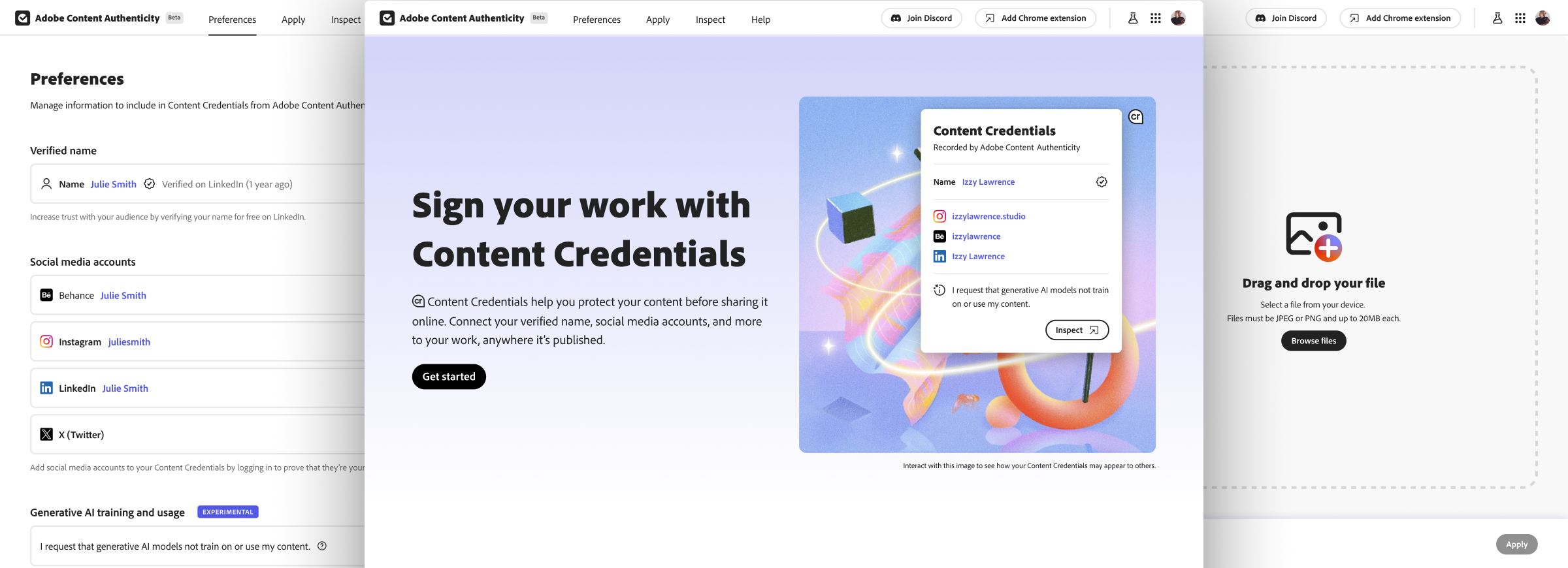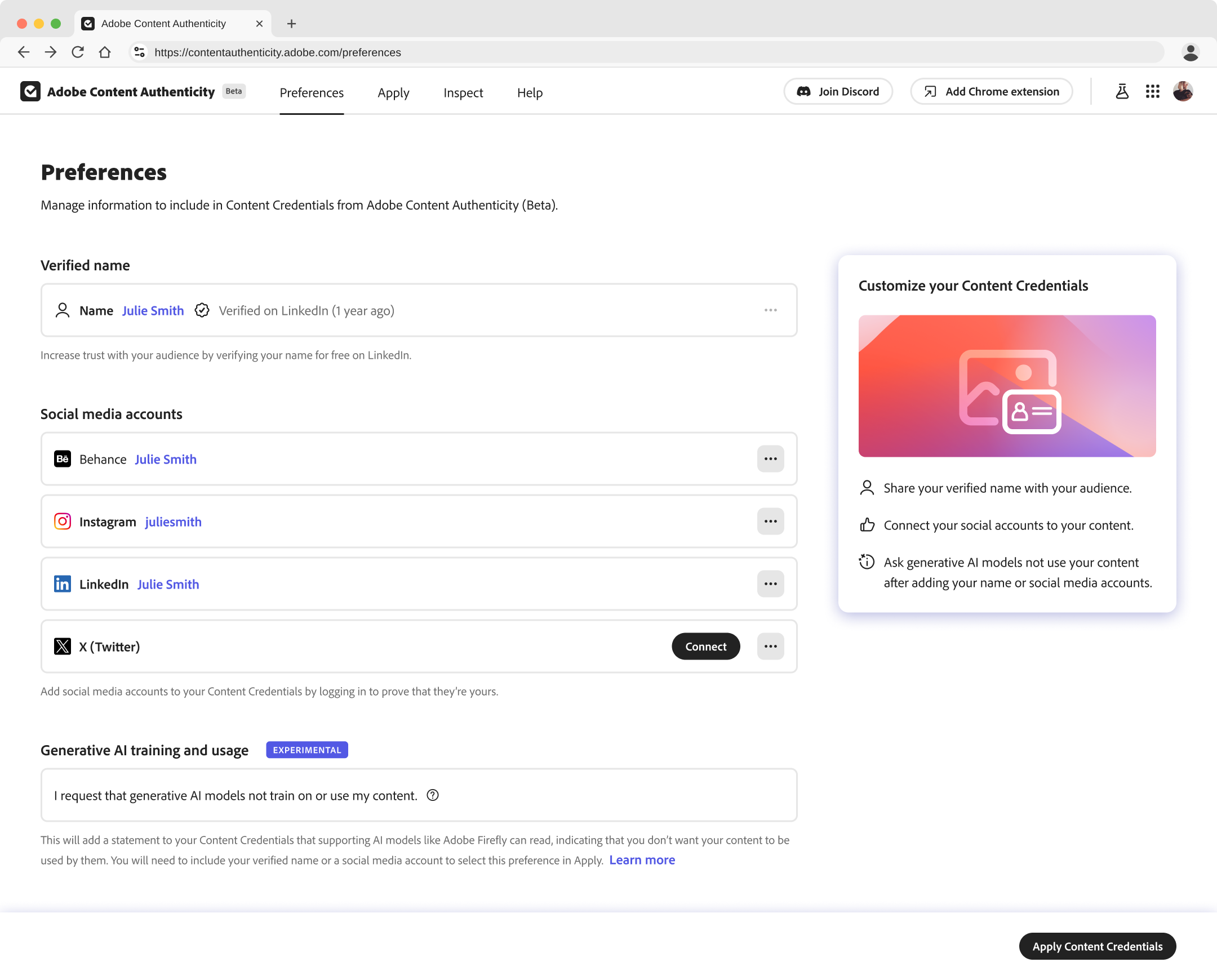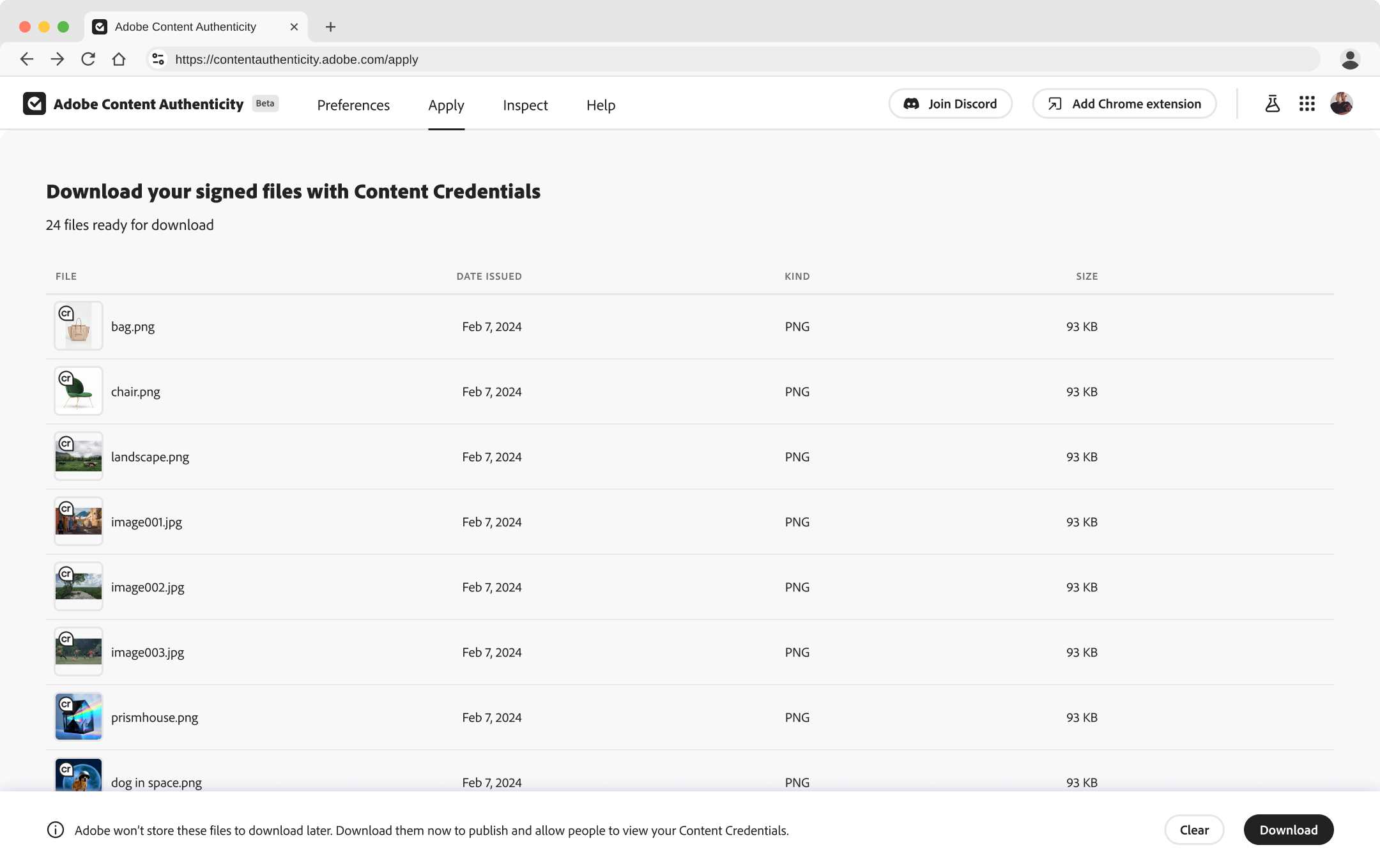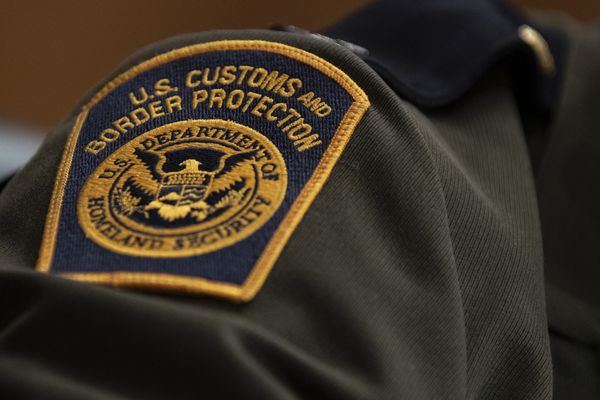
As AI art and AI-generated images rapidly become the norm across many creative industries, the question of ownership, consent, and authenticity has taken centre stage. It's why Adobe has put so much time into creating Content Authenticity web app that everyone can use.
Adobe, a longtime champion of creative professionals, but also a developer of its own 'ethical' AI model Firefly, has had its critics over the last couple of years, but with new tools that aim to redefine how digital content is attributed, verified and used, Adobe aims to please both pro artists and its new 'casual' creatives.
In theory, with this one tool, Adobe hopes to draw a line in the sand, that can, from here on out, arm artists with the knowledge of how an image was created and eventually how it can or can't be used. (We've seen in Project Know How the impressive way this tech can be implemented to track image ownership.)
The Adobe Content Authenticity web app, as well as a robust system of Content Credentials, part of a broader initiative the company believes could become a global standard for digital provenance, at least is a step in the right direction for artists fearful of AI and its impact.
Andy Parsons, the Senior Director of Content Authenticity at Adobe, sat down with me to explain how the new Content Authenticity web app will equip creators with something long overdue: real agency over their work in an increasingly AI-dominated world.

Signing digital art like a masterpiece
"This is akin to an artist signing their work," Andy explains. "Just like a painter or photographer might sign a physical piece, this allows creators to digitally sign their work with verified credentials."
With Adobe’s new free web application, Adobe Content Authenticity, anyone with an Adobe ID can upload an image and sign it. This signature isn’t a watermark or a logo. It’s a cryptographic, verifiable identity tag that tells the world who made it, where it originated, and, crucially, what the creator wants done with it.
These Content Credentials serve as a digital "nutrition label" that can travel with the content wherever it’s shared online. The idea is a good one, even if it does rely on people, and studios, to adopt it as a standard.
Initially available for images, this technology is built on an open standard (C2PA) developed in collaboration with companies like Google, Sony, Meta and OpenAI. Video and audio support is on the horizon, suggesting the potential for a cross-medium shift in how digital ownership and intent are shown and used more widely. (Part of Adobe's broader plan to tackle AI and copyright protection.)

AI training opt-out
One of the most useful tools found in the Content Authenticity app is the ability for artists to indicate their preference regarding generative AI training. As Andy tells me, this marks the start of a system where "someone can sign their work and indicate an AI training and usage preference that, over time, we think will be respected".
Importantly, this isn’t about impeding training with technical tricks like data poisoning. Instead, Adobe is betting on a standards-based, opt-in / opt-out idea tied directly to the media asset itself. If adopted widely by platforms and regulators, it could become a cornerstone of future AI development practices, one where creator consent is a requirement, not an afterthought.
Adobe is in frequent conversation with policymakers in the EU, UK, and elsewhere about how regulations could formalise this kind of creator-driven consent model.
"We think this method of connecting the opt-out of training to the media that follows it wherever it goes is the simplest and most referred way to do that," says Andy.
But there are many 'ifs' and 'buts' to the greater use of Content Credentials, with a reliance on models and platforms playing along to a voluntary system. But (three's another pesky 'but'), it feels like the first step on a tall ladder to a place artists can feel more empowered.

The trust issue
Adding another layer of trust is Adobe’s integration of verified identities. Digital artists and creators can now attach their real names, social handles, and even LinkedIn-verified credentials to their signed content. This helps solve the critical “who made this?” problem in a world where generative AI can mimic nearly any style or voice.
Adobe plans to deepen this system further by integrating with platforms like Behance Pro, its freelancing and licensing marketplace. The combination of verified credentials and content usage preferences could unlock new opportunities in licensing, job opportunities and even monetisation.
The success of this initiative hinges not only on Adobe’s tools but on adoption by platforms and other major players. The good news? It's already happening. According to Andy Google is just one major platform that has begun showing Content Credentials in YouTube and Google Image Search.

"They’re adopting the standard quite rapidly," says Andy, who remains optimistic about broader platform buy-in, but also admits currently such platforms won't host the Content Credentials app natively.
That said, Meta, OpenAI and others are also participating in the C2PA steering committee, signalling a growing recognition that attribution and ethical use are not fringe concerns. These are central to the future of content creation, and given how these platforms depend on creators and artists for content, perhaps it's only time before they are forced to adopt Content Credentials as a standard.
Still, Parsons acknowledges that progress won’t happen overnight. "This is like building a two-sided marketplace," he says. "You need the supply side – creators and tools – and the consumption side – platforms and browsers that display this data meaningfully."
More than a PR stunt
While some might view Adobe's move as a response to criticism over AI tools like Firefly, Andy makes it clear this is not about winning back trust. "This is a tool that our creators have asked for," he states. "We're not charging anything for this. We think it needs to exist."
In fact, Adobe’s plan to embed a centralised preferences hub across Creative Cloud apps shows just how deeply its integrating creator and artist feedback. Whether editing a PSD file in Photoshop or working in Lightroom or Adobe Express, he tells me users can set and carry their preferences across the ecosystem.
I joke, about being a 'lazy artist' and want this kind of thing done at a click, setup once and carried across all exported files. And that's just how Content Credentials can work.

Ultimately, Adobe’s Content Authenticity web app isn’t just about labelling what’s AI-made or human-made, it’s about giving creators back their voice in a digital landscape increasingly shaped by algorithms and mistrust.
"I don’t think we’re forcing anyone’s hand," Andy tells me earnestly. "We believe that human creativity should be enhanced, not eclipsed, by AI, and creators deserve the right to decide how their work is used."
With Content Credentials and the new web app, Adobe is laying the groundwork for a more ethical, transparent and creator-empowering future, one where attribution and AI can truly coexist.
That will, for many, still sound like a future they don't want to be a part of, as AI 'art' shouldn't exist and human-made art should take precedence. But at least this could, if taken up widely, help prevent art being used to train AI models, or at least empower artists to identify when, where and how their work has been 'scraped'.
For creatives navigating this new AI world, Content Credentials could be more than a neat feature but in fact a lifeline.
Read more announcements from Adobe MAX London today on site, or our guide to the best digital art software for our view on Photoshop.







